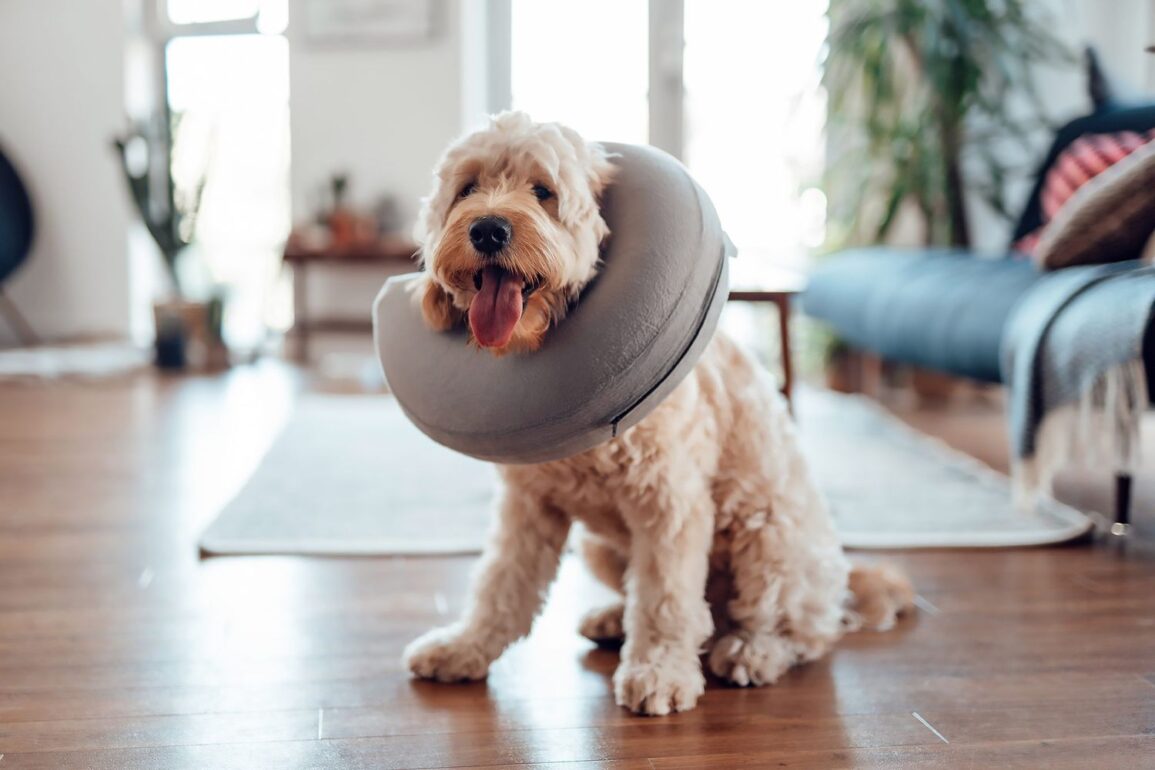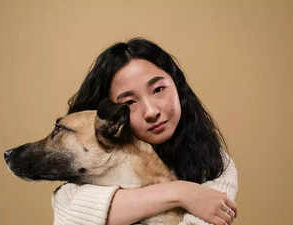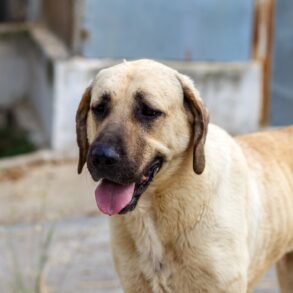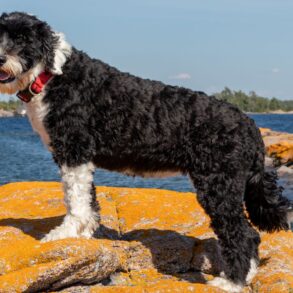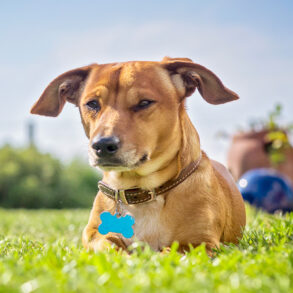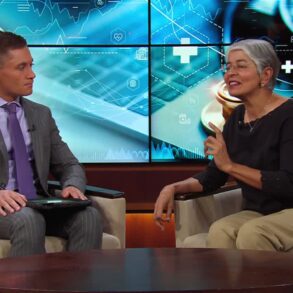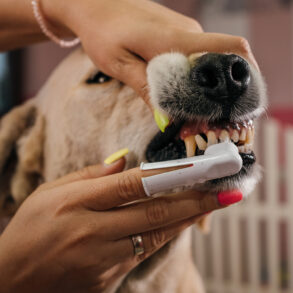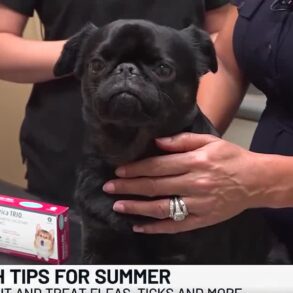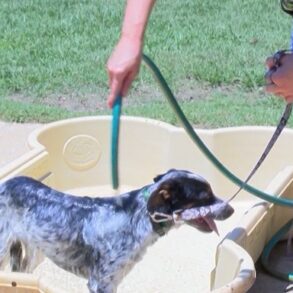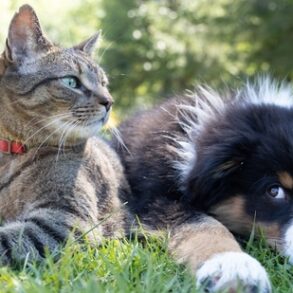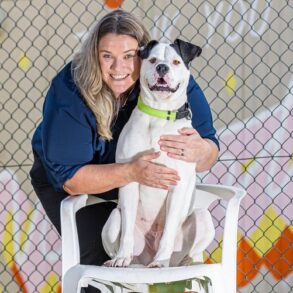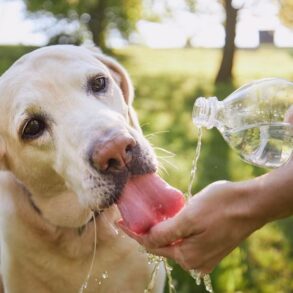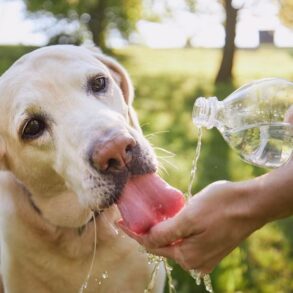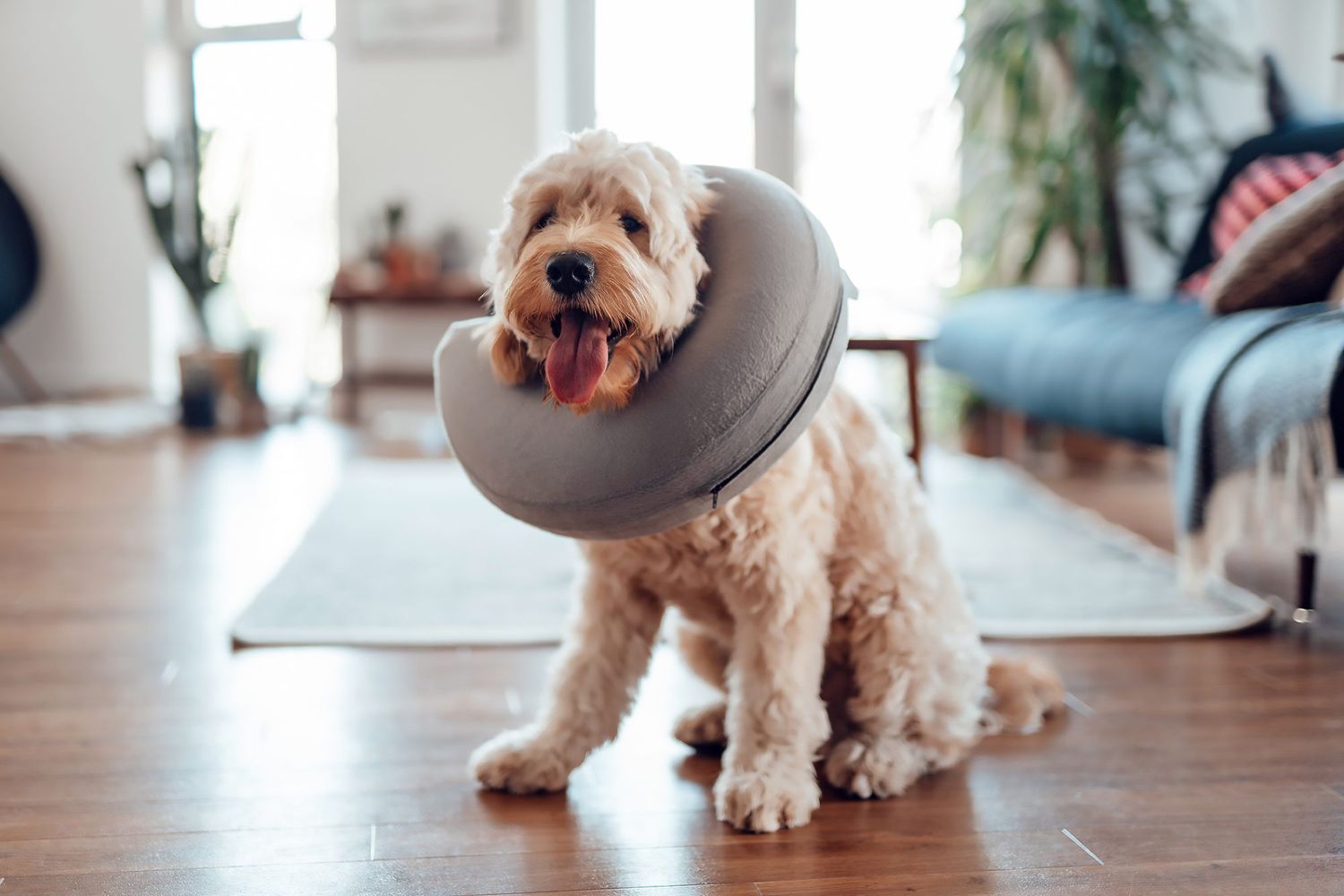
Female dog spaying, known to vets as an ovariohysterectomy, involves removing the ovaries and uterus. Although it sounds complex, these operations are quite routine and usually have terrific outcomes.
However, any surgery is a big deal for a dog and you should plan for recovery time. Monitoring the incision is important, and being sure she does not overexert herself until she is fully healed. To ensure your sweet girl has an easy spay recovery, we asked Gabrielle Fadl, DVM, medical director at Bond Vet, for specific tips for keeping your dog comfortable as she heals.
Why Are Dogs Spayed?
Fadl says the primary reason behind spaying is to prevent accidental pregnancy. This is why most pups are spayed before or shortly after their first heat cycle, or estrus. Depending on your dog’s age and size, she might have a period as early as 4–6 months old in small or toy dogs, and up to 18 months in large dogs. Dog periods signal the start of estrus, which includes three phases that last about 30 days. During this period, female dogs are the most fertile. And unless she’s spayed, she’ll repeat this cycle every six months.
Fadl tells Daily Paws that spaying a dog has other health benefits, too, such as thwarting behavioral and health consequences that are ultimately caused by unchecked hormonal influences. “Examples of the things vets try to prevent with a spay surgery include breast and ovarian cancer, uterine infections, and risky behaviors such as escaping the home to find a mate, then becoming lost or injured,” she says.
Spaying is usually performed outside a dog’s time of heat, she adds, unless there’s a strong reason for it otherwise.
Dog Spay Recovery Time
Dog spay recovery starts all the way back to preventative measures administered before surgery, Fadl says. Administering pre-op medications, anesthesia, and body prep all help ensure your pooch gets back on her feet okay. Sometimes, preparation is longer than the operation itself.
“An hour would probably be the absolute shortest amount of time to allow for all of this to happen. For most dogs, [spaying] can be two or more hours, including all the time spent monitoring them as they recover from anesthesia,” she says. “That’s why dogs are usually brought to a vet clinic in the morning and then don’t go home until later in the day.”
She adds a dog’s size, age, and body composition—how much fat tissue is in her abdomen—influences your dog’s spay recovery time, too.
Once home, Fadl says a full return to normal activity usually takes between 10–14 days. “This is the amount of time it takes for all of the incisions to heal, and it’s at this time that sutures in the skin would be removed if needed.”
She adds that the first few days post-surgery are the most critical part of dog spay recovery because it’s the highest risk period for internal bleeding to occur. “Fortunately, this type of complication is very rare in a routine spay. However, it can be serious, even fatal, if blood loss is severe, so it’s important to take precautions to limit the possibility of internal bleeding after surgery.”
Monitoring Your Dog’s Spay Incision
This is a vital part of your role as a dog parent after a spay procedure. To best monitor your dog’s spay incision, Fadl says to inspect the incision site right after surgery so you have a frame of reference if any changes occur. She adds that the veterinary team will give you further instructions on potential issues to look out for such as:
- Redness
- Swelling
- Bleeding
- Discharge or odors
“While less common, also look for any sign that the incision may be opening up, such as missing sutures or being able to see the tissue underneath rather than just the skin,” Fadl says. “Also symptoms of pain, such as yelping when you examine the area or a very stiff posture with the abdomen guarded or tucked up.”
Need a visual? Here are some dog spay recovery pictures after surgery on a small dog. Your vet will provide more details about your dog’s specific procedure and how it affects incision healing.
Fadl recommends monitoring your girl’s behavior, too. Naturally, she’ll be a bit tired and groggy in the evening after the surgery and possibly the next day as the anesthesia wears off. But within 24-36 hours, she should be alert and interacting with you as normal, as well as eating and going to the bathroom normally. Fadl says if you notice abnormal behavior such as lethargy or excessive tiredness, lack of appetite, vomiting, or diarrhea, contact your vet right away.
Dog Spay Recovery Aftercare Tips
If ever there was a time to spoil your best pup for a little while, this is it! Break out enrichment toys and make her comfy-cozy. Your goal? Keep her mellow to ensure she heals well. This is sometimes difficult, Fadl says, as “many pets want to get back to their normal activities sooner than you might expect.”
Here are some guidelines for managing her activities, health, and mood:
- Help her up the stairs: The first night following surgery, assist her with navigating stairs so she doesn’t fall. Talk with your vet about whether your dog should avoid stairs completely until her incision heals.
- Shorten your strolls: Avoid long walks until your vet gives the green light. No running, jumping, or playing, either.
- Leash up: Make sure to use a leash when you take her outside, using a shorter lead than normal to prevent her from overexerting herself.
- Spruce up her favorite spots: Make sure her crate is clean and outfitted with fresh bedding and favorite toys so she has a safe place to relax.
- Avoid bath time: Unless your vet says otherwise, don’t bathe your dog until the incision is completely healed.
- Use the cone: Your dog will be sporting a cone during spay recovery. No, she won’t like it, but it prevents her from licking or chewing at her incision, which could cause inflammation.
- Give her space: Minimize physical interactions with other animals and even children to reduce the possibility of the incision opening up during play.
Overall, consider how your routines and activities might affect her, and choose to dial down a bit. Let’s face it: you’re eager for a few chilled-out movie nights with your furry best friend, too!
“While this all might sound scary, and it’s important to know what you are watching for, most of these scenarios and complications aren’t common at all,” Fadl says. “For most dogs, a dog spay is a very routine procedure from which they recover quickly.”
Rest assured your vet is just a call away if something doesn’t seem right once you and your good girl get home.
This post was originally published on this site be sure to check out more of their content.




